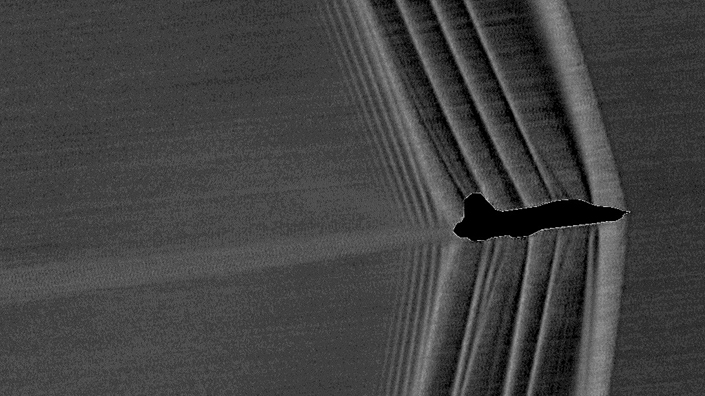As it takes off, you rip open a small bag of nuts and watch the world blur past.
Less than 30 minutes later, you land in New York – an almond and a couple of peanuts still rattle around in the bottom of the bag. This is commercial hypersonic flight, and researchers claim it could be closer than ever after a major materials breakthrough.
Strong, lightweight and heat resistant
Hypersonic travel is defined as Mach 5 (6,174km/h) and above. Concorde had an average cruise speed of just over Mach 2, while the fastest ever manned aircraft, the experimental North American X-15, hit Mach 6.7 in October 1967. However, the model only reached 199 flights after one fatal crash and numerous technical problems, and it was cancelled a year after the record-breaking top speed.
Since the 1960s, companies including Scaled Composites and Virgin have developed manned hypersonic jets but none has managed – or even attempted – to replicate the relatively accessible experience of Concorde travel with Mach 5+ speeds.
 The Concorde in flight (Credit: Ken Fielding)
The Concorde in flight (Credit: Ken Fielding)
One of the main challenges, and one which grows as an aircraft’s surface area grows to accommodate more passengers, is the heat generated at the incredible speeds of hypersonic flight. Manufacturers have previously used carbon nanotubes, but now researchers at NASA and Binghamton University in New York have successfully tested boron nitride nanotubes (BNNTs), which they say are more heat resistant.
The strong, lightweight and extremely expensive material could enable vehicles travelling at five to 10 times the speed of sound, the US Air Force-funded team says. However, successful testing of the potentially accessible material throws up other significant challenges, says aerodynamics expert Paul Bruce from Imperial College London to Professional Engineering.
“If you want to use anything other than a rocket, which is extremely inefficient but will work in any conditions… if you want to use something like an aircraft engine, to design one of those for high speeds, where it sucks the air in from the atmosphere and then injects fuel and burns it, that is a very, very difficult thing to do for anything above Mach 3, Mach 4, and no one has really shown that you can do it,” says Bruce.
Engineers “can’t get away” from inefficiencies created by speeds of Mach 5 and above, Bruce says. Huge aerodynamic drag makes engines far thirstier than on slower aircraft, increasing fuel costs for equivalent flights by multiple factors.
Scorching temperatures build up in front of planes as air is compressed. “All the kinetic energy is converted into temperature,” says Bruce. “You get a very, very hot bit of gas in front of the vehicle and that tends to melt or otherwise ablate the surface.”
Other than blunting and rounding aerodynamic features – something completely at odds with hypersonic flight – the only other option is advanced heat-resistant materials, says Bruce. BNNTs could provide the answer, claim the NASA and Binghamton researchers.
Five to 10 years
The US space agency is one of the only bodies in the world which can produce quality BNNTs, says research author and mechanical engineer Changhong Ke from Binghamton. The study found the material can withstand temperatures of up to 900oC, higher than the maximum stable temperature of 750oC for carbon nanotubes, which are frequently used for their strength and heat conductivity.
The research team tested the material’s structural and mechanical properties in an oxygen environment, says Ke. “We weren't testing this material in a vacuum, like what you would experience in space,” he said. “Materials can withstand much higher temperatures in space. We wanted to see if BNNTs could hold up in the type of environment an average fighter jet or commercial plane would experience.”
 Shockwaves produced by a US Air Force T-38 banking at Mach 1.05 (Credit: NASA)
Shockwaves produced by a US Air Force T-38 banking at Mach 1.05 (Credit: NASA)
The nanotube material can also handle high amounts of stress and is extremely lightweight, adds Ke. He claimed it could feature on planes in five to 10 years, if the price drops from a prohibitive $1,000/g. However, Ke says he is confident in its applicability for fighter jets and eventually commercial flights, as carbon nanotubes saw a similar price drop to between $10-20/g.
Despite the technological challenges, Bruce agrees that frequent and more accessible flights between Mach 5 and Mach 10 are “absolutely” realistic.
The NASA and Binghamton research is published in Scientific Reports.
Content published by Professional Engineering does not necessarily represent the views of the Institution of Mechanical Engineers.